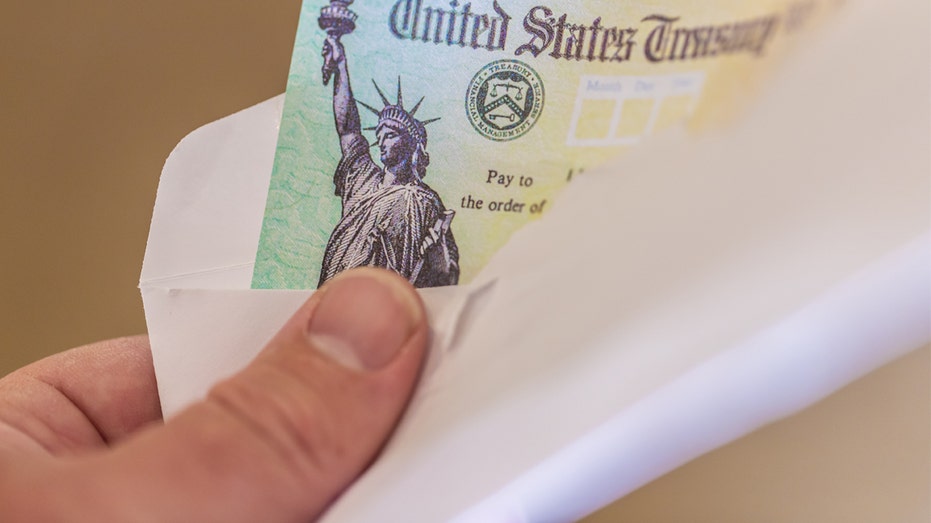The FDIC and your bank deposits: What to know
The FDIC insures bank deposits up to $250,000 per account
Ken Fisher: US banking system 'just about' in best shape of my career
Fisher Investments founder Ken Fisher discusses the fallout from Silicon Valley Bank's sudden collapse on 'Varney & Co.'
The collapse of Silicon Valley Bank reminded investors and banking customers about what's insured by the Federal Deposit Insurance Corporation (FDIC) and what's not in extraordinary situations like this.
In the case of SVB, the Federal Reserve and U.S. Treasury Department, working in concert with the FDIC, moved to cover all depositors above the standard threshold.
However, this is not the norm. FOX Business explains what you need to know about your money.
| Ticker | Security | Last | Change | Change % |
|---|---|---|---|---|
| JPM | JPMORGAN CHASE & CO. | 315.15 | -0.63 | -0.20% |
| BAC | BANK OF AMERICA CORP. | 54.53 | -0.24 | -0.45% |
| WFC | WELLS FARGO & CO. | 92.59 | +0.39 | +0.42% |
| C | CITIGROUP INC. | 111.46 | +0.18 | +0.16% |
What does the FDIC do?
The mission of the FDIC is to maintain public confidence and maintain stability in the U.S. financial system. The FDIC safeguards in many ways: it insures deposits, supervises financial institutions for soundness and consumer protection, make financial institutions resolvable, plus it manages receiverships.
HOW SILICON VALLEY BANK GOT BURNED
Why was the FDIC created?
The FDIC was created in 1933 as a response to bank failures that occurred in the 1920s and early 1930s during the Great Depression.
MOODY'S WARNS OVER SHAKY BANKS
How much in deposits per account are FDIC insured?
FDIC deposit insurance protects depositors up to $250,000 per institution, and possibly more under circumstances. After the collapse of SVB, which roiled the regional banking sector, some lawmakers are calling upon the FDIC to raise these limits permanently.
| Ticker | Security | Last | Change | Change % |
|---|---|---|---|---|
| I:BKX | KBW NASDAQ BANK INDEX | 163.7536 | -0.01 | -0.01% |
| XLF | FINANCIAL SELECT SECTOR SPDR ETF | 54.63 | -0.01 | -0.02% |
LAWMAKERS RUSH TO RETURN SILICON VALLEY DONATIONS
| Ticker | Security | Last | Change | Change % |
|---|---|---|---|---|
| SIVB | NO DATA AVAILABLE | - | - | - |
FDIC-Insured Deposit Products
The following are examples of deposit products that are insured by the FDIC:
- Checking accounts
- Savings accounts
- Money market deposit accounts
- Certificates of deposit (CD)
- Prepaid cards (assuming certain FDIC requirements are met)
It’s important to know that the amount of FDIC insurance coverage you may be entitled to depends on the FDIC ownership category. This generally means the manner in which you hold your funds at the bank.
According to Brian Sullivan, spokesperson with the FDIC, the four most common individual "ownership categories" that qualify for FDIC Deposit Insurance are:
- Single accounts
- Joints accounts
- Revocable Trusts (With beneficiaries. This is created by the number of owners of the trust times the number of unique beneficiaries, times $250K.)
- Certain retirement accounts (IRAs and "self-directed retirement accounts"… just $250K)
And according to Sullivan, potentially, if you are a depositor with one of each of these ownership categories, you could be insured for more than $250K.
What Products Are Not Insured?
While the scope of the FDIC is expansive, there are some non-deposit investment products that are not insured by the FDIC, even if they were purchased from an insured bank. These include:
- Stock investments
- Bond investments
- Mutual funds
- Crypto Assets
- Life insurance policies
- Annuities
- Municipal securities
- Safe deposit boxes or their contents
U.S. Treasury bills, bonds or notes, however, are backed by the full faith and credit of the U.S. government.





















